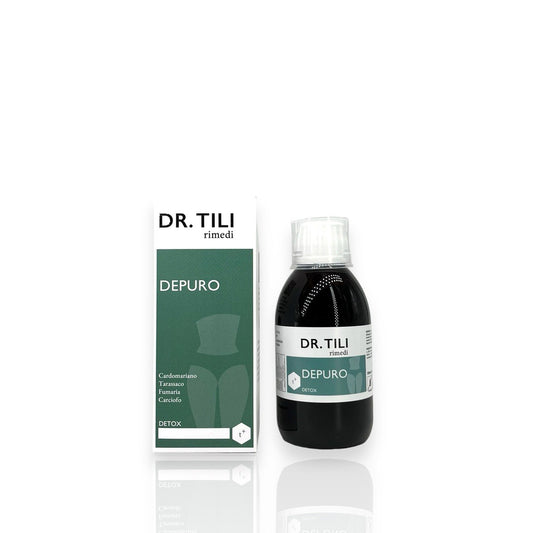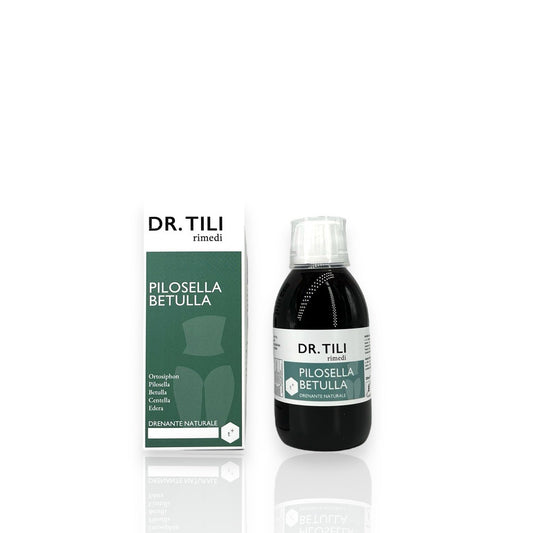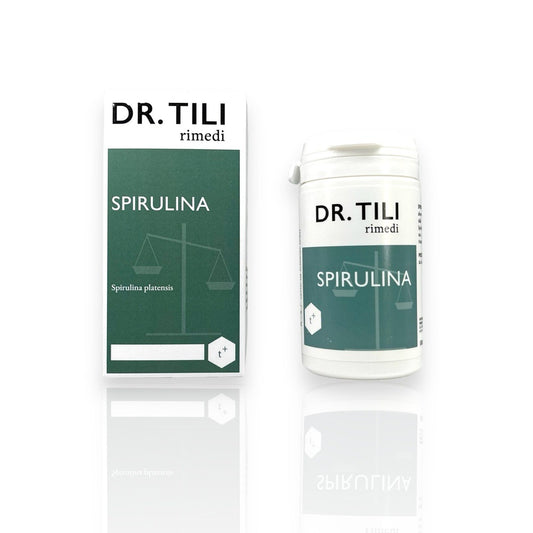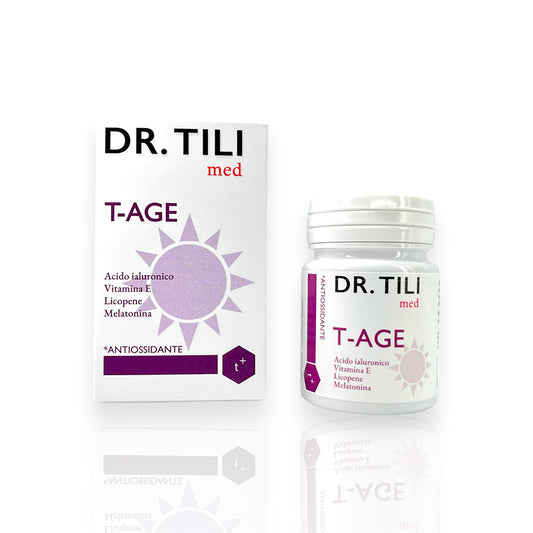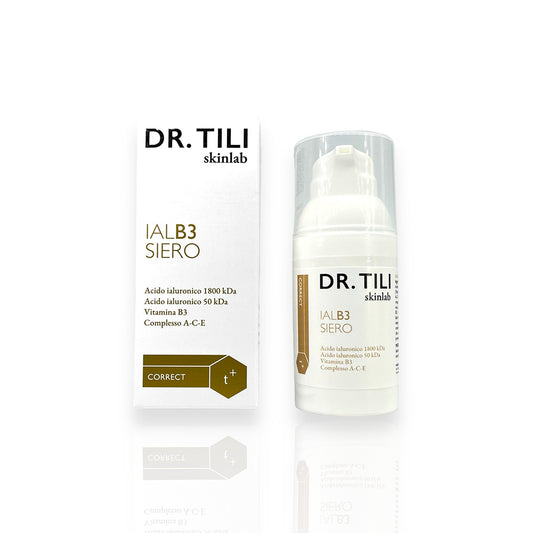EG SpA
Ketodol 25mg + 200mg 20 tablets
Ketodol 25mg + 200mg 20 tablets

Pickup available at Farmacia Tili
Usually ready in 24 hours
PRODUCT NET WEIGHT
PRODUCT NET WEIGHT
EAN
EAN
028561037
MINSAN
MINSAN
028561037
Ketodol 25mg + 200mg is a combination drug based on ketoprofen and sucralfate , indicated for the treatment of inflammatory pain of musculoskeletal origin , such as lumbago, neck pain, joint pain and post-traumatic pain. Thanks to the synergistic action of the two active ingredients, it guarantees an effective anti-inflammatory and analgesic action, while protecting the gastric mucosa from the irritating effects of NSAIDs. The tablets are formulated to offer rapid pain relief , reducing the risk of gastric disorders often associated with the use of anti-inflammatory drugs.
ACTIVE INGREDIENTS
Active ingredients contained in Ketodol 25mg + 200mg 20 tablets - What is the active ingredient of Ketodol 25mg + 200mg 20 tablets?
One tablet contains: Active ingredients: Core: ketoprofen 25 mg Coating: sucralfate 200 mg Excipients with known effect: contains lactose. For the full list of excipients, see section 6.1.
EXCIPIENTS
Composition of Ketodol 25mg + 200mg 20 tablets - What does Ketodol 25mg + 200mg 20 tablets contain?
Core : lactose monohydrate, sodium starch glycolate (type A), povidone, magnesium stearate. Coating : maize starch, sodium starch glycolate (type A), povidone, talc, magnesium stearate, cochineal red (E120).
DIRECTIONS
Therapeutic indications Ketodol 25mg + 200mg 20 tablets - Why is Ketodol 25mg + 200mg 20 tablets used? What is it for?
Pain of various origins and natures (headache, toothache, neuralgia, osteo-articular and muscular pain, menstrual pain).
CONTRAINDICATIONS SIDE EFFECTS
Contraindications Ketodol 25mg + 200mg 20 tablets - When should Ketodol 25mg + 200mg 20 tablets not be used?
KETODOL is contraindicated in patients with a history of hypersensitivity reactions, such as bronchospasm, asthmatic attacks, rhinitis, urticaria or other allergic-type reactions, to ketoprofen, acetylsalicylic acid (ASA) or other nonsteroidal anti-inflammatory drugs (NSAIDs). Serious, rarely fatal, anaphylactic reactions have been reported in these patients (see section 4.8). KETODOL is also contraindicated in the following cases: - hypersensitivity to the active substances or to any of the excipients listed in section 6.1; - during intensive diuretic therapy; - chronic dyspepsia; - gastritis; - severe renal insufficiency; - severe forms of liver insufficiency (liver cirrhosis, severe hepatitis); - porphyria, leukopenia and thrombocytopenia; - subjects with active haemorrhages; - haemorrhagic diathesis; - subjects with haemostatic disorders; - severe heart failure; - active peptic ulcer or previous history of gastrointestinal bleeding, ulceration or perforation; - history of gastrointestinal bleeding or perforation following previous therapy with NSAIDs; - do not administer during antibiotic treatments with tetracyclines to avoid formation of complex salts with inactivation of the antibiotic itself in contact with sucralfate. KETODOL is also contraindicated during the third trimester of pregnancy, during breastfeeding (see paragraph 4.6) and in pediatric age.
DOSAGE
Quantity and method of taking Ketodol 25mg + 200mg 20 tablets - How to take Ketodol 25mg + 200mg 20 tablets?
Adults and children over 15 years: 1 tablet in a single dose or repeated 2 - 3 times a day, in the most intense painful forms. It is preferable to take the product on a full stomach (with a glass of water). Do not exceed the recommended doses: in particular, elderly patients should stick to the minimum dosages indicated above. The duration of therapy should be limited to overcoming the painful episode. The lowest effective dose should be used for the shortest period necessary to relieve the symptoms. Undesirable effects can be minimised by using the lowest effective dose for the shortest possible duration of treatment necessary to control the symptoms (see section 4.4). Special populations Patients with renal insufficiency and the elderly It is advisable to reduce the initial dose and perform maintenance therapy with the minimum effective dose. Individualised adjustments can be considered only after having established good tolerability of the drug (see section 5.2). Patients with hepatic impairment Patients with mild or moderate hepatic impairment should be carefully monitored and treated with the minimum effective daily dose (see sections 4.3, 4.4 and 5.2). Paediatric population The safety and efficacy of ketoprofen have not been studied in children.
CONSERVATION
Storage Ketodol 25mg + 200mg 20 tablets - How to store Ketodol 25mg + 200mg 20 tablets?
This medicinal product does not require any special storage conditions.
WARNINGS
Warnings Ketodol 25mg + 200mg 20 tablets - About Ketodol 25mg + 200mg 20 tablets it is important to know that:
Warnings Undesirable effects may be minimised by using the lowest effective dose for the shortest duration necessary to control symptoms (see section 4.2 and following paragraphs). The concomitant use of KETODOL with other NSAIDs, including cyclooxygenase-2 selective inhibitors, should be avoided. Gastrointestinal bleeding, ulceration and perforation Gastrointestinal bleeding, ulceration and perforation, which can be fatal, have been reported with all NSAIDs at anytime during treatment, with or without warning symptoms or a previous history of serious GI events. The risk of gastrointestinal bleeding, ulceration or perforation is higher with increasing NSAID doses, in the elderly and in patients with a history of ulcer, particularly if complicated with haemorrhage or perforation (see section 4.3). These patients should start treatment on the lowest dose available. Concomitant use of protective agents (misoprostol or proton pump inhibitors) should be considered for these patients and also for patients taking low dose aspirin or other drugs likely to increase gastrointestinal risk (see below and section 4.5). Patients with a history of gastrointestinal toxicity, particularly the elderly, should report any abdominal symptoms (especially gastrointestinal bleeding) particularly in the initial stages of treatment. Caution should be advised in patients taking concomitant medications which could increase the risk of ulceration or bleeding, such as oral corticosteroids, anticoagulants such as warfarin, selective serotonin reuptake inhibitors or anti-platelet agents such as aspirin (see section 4.5). When gastrointestinal bleeding or ulceration occurs in patients receiving KETODOL the treatment should be withdrawn immediately. NSAIDs should be administered with caution to patients with a history of gastrointestinal disease (ulcerative colitis, Crohn's disease) as these conditions may be exacerbated (see section 4.8). Some epidemiological evidence suggests that ketoprofen may be associated with a higher risk of serious gastrointestinal toxicity compared with other NSAIDs, particularly at high doses (see sections 4.2 and 4.3). Elderly Elderly patients have an increased frequency of adverse reactions to NSAIDs especially gastrointestinal bleeding and perforation which may be fatal (see section 4.2). Skin reactions Serious skin reactions, some of them fatal, including exfoliative dermatitis, Stevens-Johnson syndrome and toxic epidermal necrolysis, have been reported very rarely in association with the use of NSAIDs (see section 4.8). Patients appear to be at higher risk early in the course of therapy: the onset of the reaction occurring in the majority of cases within the first month of treatment. KETODOL should be discontinued at the first appearance of skin rash, mucosal lesions or any other sign of hypersensitivity. To avoid any hypersensitivity or photosensitivity phenomena, it is advisable not to expose yourself to the sun during use. Precautions Cardiovascular, renal and hepatic dysfunction Renal function should be carefully monitored at the beginning of treatment in patients with heart failure, cirrhosis and nephrosis, in patients on diuretic therapy, with chronic renal failure, especially if elderly. In these patients, the administration of ketoprofen may cause a reduction in renal blood flow, caused by the inhibition of prostaglandins and lead to renal failure (see section 4.3 Contraindications). In patients with impaired liver function tests or with previous liver disease, transaminases should be regularly assessed, especially during long-term therapies. Cases of jaundice and hepatitis have been reported with ketoprofen. The product, like all nonsteroidal anti-inflammatory drugs, interferes with the synthesis of prostaglandins and their important intermediates that participate in physiological functions. The drug, therefore, requires special precautions, or its exclusion from use is required, when the following conditions are present in the patient: states of renal hypoperfusion, renal disease, heart failure, mild to moderate hepatic insufficiency, advanced age. Cardiovascular and cerebrovascular effects Caution is required in patients with a history of hypertension and/or mild to moderate congestive heart failure since fluid retention and edema have been reported in association with treatment with NSAIDs. Clinical studies and epidemiological data suggest that the use of some NSAIDs (especially at high doses and for long-term treatment) may be associated with an increased risk of arterial thrombotic events (e.g. myocardial infarction or stroke). There are insufficient data to exclude a similar risk for ketoprofen. Patients with uncontrolled hypertension, congestive heart failure, established ischaemic heart disease, peripheral arterial disease, and/or cerebrovascular disease should only be treated with ketoprofen after careful consideration. Similar consideration should be made before initiating long-term treatment in patients with risk factors for cardiovascular disease (e.g. hypertension, hyperlipidaemia, diabetes mellitus, smoking). An increased risk of atrial fibrillation associated with the use of NSAIDs has been reported. Hyperkalaemia may occur, especially in patients with underlying diabetes, renal insufficiency, and/or concomitant treatment with agents promoting hyperkalaemia (see section 4.5). Potassium levels should be monitored in these circumstances. Masking of symptoms of underlying infections KETODOL may mask the symptoms of infection, which may delay initiating adequate treatment and therefore worsen the outcome of the infection. This has been observed in community-acquired bacterial pneumonia and bacterial complications of varicella. When KETODOL is administered for the relief of fever or pain related to infection, monitoring of the infection is recommended. In non-hospital settings, the patient should contact a doctor if symptoms persist or worsen. Respiratory disorders Patients with asthma associated with chronic rhinitis, chronic sinusitis and/or nasal polyps have a higher risk of allergies to aspirin and/or NSAIDs than the rest of the population. Administration of this medicinal product may cause asthma attacks or bronchospasm, particularly in subjects allergic to aspirin or NSAIDs (see section 4.3). Due to the interaction of the drug with the metabolism of arachidonic acid, attacks of bronchospasm and possibly shock and other allergic phenomena may occur in asthmatics and predisposed subjects. Visual disturbances If visual disturbances such as blurred vision occur, treatment should be discontinued. The use of ketoprofen, as with any drug that inhibits the synthesis of prostaglandins and cyclooxygenase, is not recommended in women who intend to become pregnant. The administration of ketoprofen should be suspended in women who have fertility problems or who are undergoing fertility investigations. The presence of sucralfate may alter the bioavailability of other drugs, therefore an interval of at least two hours should be left between taking the product and that of another drug. For these reasons, patients undergoing any other treatment should consult their doctor before taking the product. Cases of bezoar formation associated with the administration of sucralfate have been reported. The majority of these were patients in intensive care. Therefore, extreme caution should be exercised in the treatment of patients in intensive care, especially if they receive enteral nutrition, or in patients with predisposing factors such as delayed gastric emptying. After three days of treatment without appreciable results, consult your doctor. Important information about some of the ingredients This medicinal product contains lactose: patients with rare hereditary problems of galactose intolerance, the Lapp lactase deficiency or glucose-galactose malabsorption should not take this medicine. This medicinal product contains less than 1 mmol sodium (23 mg) per tablet, that is to say essentially 'sodium-free'.
INTERACTIONS
Interactions Ketodol 25mg + 200mg 20 tablets - Which medicines or foods can modify the effect of Ketodol 25mg + 200mg 20 tablets?
COMBINATIONS NOT RECOMMENDED Other nonsteroidal anti-inflammatory drugs (including selective cyclooxygenase-2 inhibitors) and salicylates at high doses : it is advisable not to combine KETODOL with acetylsalicylic acid or with other nonsteroidal anti-inflammatory drugs (including selective cyclooxygenase-2 inhibitors): increased risk of gastrointestinal ulcers and bleeding. Anticoagulants (heparin and warfarin) and anti-platelet agents (e.g. ticlopidine, clopidogrel): increased risk of bleeding (see section 4.4). NSAIDs may amplify the effects of anticoagulants such as warfarin. If concomitant administration cannot be avoided, patients should be carefully monitored. Lithium : risk of increased plasma lithium levels, which can sometimes reach toxic levels due to reduced renal excretion of lithium. Where necessary, plasma lithium levels should be monitored with possible dosage adjustment during and after NSAID therapy. Methotrexate at doses greater than 15 mg/week : increased risk of haematological toxicity from methotrexate, particularly when administered at high doses (> 15 mg/week), probably due to displacement of methotrexate from protein binding and reduced renal clearance. In patients already receiving ketoprofen, therapy should be stopped at least 12 hours before administration of methotrexate. If ketoprofen is to be administered at the end of methotrexate therapy, a 12-hour wait should be made before administration. COMBINATIONS REQUIRING CAUTION Drugs or therapeutic categories that can promote hyperkalaemia ( e.g. potassium salts, potassium-sparing diuretics, ACE inhibitors and angiotensin II antagonists, NSAIDs, heparins (low molecular weight or unfractionated), ciclosporin, tacrolimus, trimethoprim): the occurrence of hyperkalaemia may depend on the presence of cofactors. The risk of hyperkalaemia is increased when the above-mentioned drugs are administered concomitantly (see section 4.5). Corticosteroids : increased risk of gastrointestinal ulceration or bleeding (see section 4.4). Diuretics : patients who are taking diuretics, including particularly dehydrated patients, have a high risk of developing renal failure resulting from a decrease in renal blood flow caused by the inhibition of prostaglandins. These patients should be rehydrated before starting co-administration and their renal function should be monitored when starting treatment (see section 4.4). NSAIDs may reduce the effect of diuretics. ACE inhibitors and angiotensin II antagonists : in patients with compromised renal function (e.g. dehydrated patients or elderly patients) the co-administration of an ACE inhibitor or an angiotensin II antagonist and agents that inhibit the cyclo-oxygenase system may lead to further deterioration of renal function, including possible acute renal failure. These interactions should be considered in patients taking KETODOL concomitantly with ACE inhibitors or angiotensin II antagonists. Therefore, the combination should be administered with caution, especially in elderly patients. Patients should be adequately hydrated and monitoring of renal function should be considered after initiation of concomitant therapy (see section 4.4). Methotrexate at doses less than 15 mg/week : During the first weeks of combination therapy, a complete blood count should be performed weekly. In the presence of even mild alterations in renal function or in elderly patients, monitoring should be more frequent. Sulfonylureas : In addition, possible interactions with oral hypoglycaemic agents should be taken into account. Pentoxifylline : Increased risk of bleeding. Closer clinical monitoring and monitoring of bleeding time are required. Tenofovir : Concomitant administration of tenofovir disoproxil fumarate and NSAIDs may increase the risk of renal failure. Cardiac glycosides : NSAIDs may exacerbate cardiac failure, reduce the glomerular filtration rate and increase cardiac glycoside levels; however, a pharmacokinetic interaction between ketoprofen and cardiac glycosides has not been demonstrated. COMBINATIONS TO BE TAKEN INTO CONSIDERATION Antihypertensives (beta-blockers, angiotensin converting enzyme inhibitors, diuretics): risk of decreased antihypertensive activity (inhibition of vasodilation by prostaglandins caused by NSAIDs). Thrombolytics : increased risk of bleeding. Several substances are involved in interactions due to their antiplatelet effect: tirofiban, eptifibatide, abciximab and iloprost. The use of various antiplatelet drugs increases the risk of bleeding. Probenecid : concomitant administration of probenecid can significantly reduce the plasma clearance of ketoprofen. Selective serotonin reuptake inhibitors (SSRIs) : increased risk of gastrointestinal bleeding (see section 4.4). Gemeprost : reduced efficacy of gemeprost. Intrauterine contraceptive devices (IUDs) : the efficacy of the device may be reduced resulting in pregnancy. Mifepristone: The efficacy of the method may theoretically be reduced due to the antiprostaglandin properties of nonsteroidal anti-inflammatory drugs (NSAIDs) including aspirin (acetylsalicylic acid). There is some evidence to suggest that concomitant administration of NSAIDs on the day of administration of the prostaglandin dose does not adversely affect the effects of mifepristone and the prostaglandin on cervical ripening or uterine contractility and does not reduce the clinical efficacy of medical termination of pregnancy. Ciclosporin and tacrolimus : Concomitant treatment with NSAIDs may carry a risk of increased nephrotoxicity, especially in the elderly. Quinolone antibiotics : Animal data indicate that NSAIDs may increase the risk of convulsions associated with quinolone antibiotics. Patients taking NSAIDs and quinolones may have an increased risk of developing convulsions. Diphenylhydantoin and sulphonamides: Since the protein binding of ketoprofen is high, it may be necessary to reduce the dosage of diphenylhydantoin or sulphonamides that are administered concomitantly.
SIDE EFFECTS
Like all medicines, Ketodol 25mg + 200mg 20 tablets can cause side effects - What are the side effects of Ketodol 25mg + 200mg 20 tablets?
Like all medicines, KETODOL can cause side effects, although not everybody gets them. The most commonly observed adverse events are gastrointestinal in nature. Peptic ulcers, perforation or gastrointestinal bleeding, sometimes fatal, particularly in the elderly, may occur (see section 4.4). Classification of expected frequencies: very common (≥ 1/10); common (≥ 1/100 to < 1/10); uncommon (≥ 1/1,000 to < 1/100); rare (≥ 1/10,000 to < 1/1,000); very rare (< 1/10,000); not known (frequency cannot be estimated from the available data). Blood and lymphatic system disorders Rare: anaemia due to bleeding, leukopenia; Not known: agranulocytosis, thrombocytopenia, bone marrow aplasia, haemolytic anaemia. Immune system disorders . Not known: anaphylactic reactions (including shock). Metabolism and nutrition disorders . Not known: hyponatraemia, hyperkalaemia (see sections 4.4 and 4.5). Psychiatric disorders . Not known: depression, hallucinations, confusion, mood alterations, insomnia. Nervous system disorders Uncommon: headache, dizziness, somnolence; Rare: paraesthesia, dyskinesia; Not known: aseptic meningitis, convulsions, dysgeusia. Eye disorders . Rare: blurred vision (see section 4.4). Ear and labyrinth disorders . Rare: tinnitus, vertigo. Cardiac disorders . Not known: cardiac failure, atrial fibrillation, palpitations and tachycardia. Vascular disorders . Not known: hypertension, vasodilation, vasculitis (including leukocytoclastic vasculitis). Respiratory, thoracic and mediastinal disorders. Rare: asthma attacks, laryngeal oedema; Not known: bronchospasm (particularly in patients with known hypersensitivity to acetylsalicylic acid and other NSAIDs), rhinitis, dyspnoea. Gastrointestinal disorders. The most commonly observed adverse events are gastrointestinal in nature. Common: dyspepsia, nausea, abdominal pain, vomiting, gastralgia, heartburn; Uncommon: constipation, diarrhoea, flatulence, gastritis; Rare: ulcerative stomatitis, peptic ulcers, colitis; Not known: exacerbation of colitis and Crohn's disease, gastrointestinal perforation or haemorrhage, sometimes fatal, particularly in the elderly (see section 4.4), pancreatitis, melaena, haematemesis. The frequency and extent of these effects are significantly reduced when the drug is taken with food (during meals or with milk). Hepatobiliary disorders. Rare: hepatitis, increased transaminase levels, increased serum bilirubin due to liver disease, jaundice. Skin and subcutaneous tissue disorders. Uncommon: exanthemas, pruritus. Not known: photosensitivity, alopecia, urticaria, angioedema, erythema, bullous reactions, including Stevens-Johnson syndrome, toxic epidermal necrolysis, acute generalized exanthematous pustulosis, dermatitis, eczema. Renal and urinary disorders. Not known: abnormal renal function tests, acute renal failure, interstitial tubular nephritis, nephrotic syndrome, dysuria. General disorders and administration site conditions. Uncommon: oedema, fatigue; Rare: asthenia. Diagnostic tests . Rare: weight gain. Clinical trial and epidemiological data suggest that use of NSAIDs (particularly at high doses and in long term treatment) may be associated with a small increased risk of arterial thrombotic events (for example myocardial infarction and stroke) (see section 4.4). Very rare cases of bezoar formation associated with sucralfate administration have been reported. Reporting of suspected adverse reactions Reporting suspected adverse reactions after authorisation of the medicinal product is important. It allows continued monitoring of the benefit/risk balance of the medicinal product. Healthcare professionals are asked to report any suspected adverse reactions via the national reporting system at https://www.aifa.gov.it/content/segnalazioni-reazioni-avverse.
OVERDOSE
Ketodol 25mg + 200mg 20 tablets Overdose - What are the risks of Ketodol 25mg + 200mg 20 tablets in case of overdose?
Symptoms of overdose may include: central nervous system disorders, such as headache, dizziness, vertigo, drowsiness, confusion and loss of consciousness, as well as abdominal pain, nausea and vomiting, diarrhea. In severe overdose, hypotension, respiratory depression, cyanosis and gastrointestinal bleeding have been observed. Cases of overdose with doses of up to 2.5 g of ketoprofen have been reported. In most cases, the symptoms observed have been benign and limited to lethargy, drowsiness, nausea, vomiting and epigastric pain. There are no specific antidotes for an overdose of ketoprofen. If a severe overdose is suspected, gastric lavage and the institution of supportive and symptomatic therapies are recommended and to compensate for dehydration, to monitor renal function and to correct acidosis, if present. In case of renal insufficiency, haemodialysis may be useful to remove the drug from the circulation.
PREGNANCY AND BREASTFEEDING
If you are pregnant or breast-feeding, think you may be pregnant or are planning to have a baby, ask your doctor for advice before taking Ketodol 25mg + 200mg 20 tablets.
Pregnancy The use of ketoprofen during the first and second trimester of pregnancy should be avoided. Inhibition of prostaglandin synthesis may adversely affect the pregnancy and/or the embryo/fetal development. Results of epidemiological studies suggest an increased risk of miscarriage and of cardiac malformation and gastroschisis after use of a prostaglandin synthesis inhibitor in early pregnancy. The absolute risk of cardiac malformations was increased from less than 1%, up to approximately 1.5%. The risk has been estimated to increase with dose and duration of therapy. In animals, administration of prostaglandin synthesis inhibitors has been shown to result in increased pre- and post-implantation loss and embryo-fetal mortality. In addition, an increased incidence of various malformations, including cardiovascular, has been reported in animals given prostaglandin synthesis inhibitors during the organogenetic period. From the 20th week of pregnancy onwards, the use of KETODOL may cause oligohydramnios resulting from fetal renal dysfunction. This condition may be encountered soon after the start of treatment and is usually reversible upon discontinuation of treatment. In addition, cases of constriction of the ductus arteriosus have been reported following treatment in the second trimester, most of which resolved after discontinuation of treatment. Therefore, during the first and second trimester of pregnancy KETODOL should not be administered unless clearly necessary. If KETODOL is used by a woman planning a pregnancy or during the first and second trimester of pregnancy, the lowest possible dose should be used for the shortest possible duration. Following exposure to KETODOL for several days from the 20th week of gestation onwards, antenatal monitoring for oligohydramnios and constriction of the ductus arteriosus should be considered. In case of oligohydramnios or constriction of the ductus arteriosus, treatment with KETODOL should be discontinued. During the third trimester of pregnancy, all prostaglandin synthesis inhibitors may expose the fetus to: - cardiopulmonary toxicity (premature constriction/closure of the ductus arteriosus and pulmonary hypertension); - renal dysfunction (see above); the mother and the neonate, at the end of pregnancy, to: - possible prolongation of bleeding time, an antiaggregant effect which may occur even at very low doses; - inhibition of uterine contractions resulting in delay or prolongation of labor. Use of the drug close to delivery may cause alterations in the haemodynamics of the small circulation of the newborn with serious consequences for respiration. Consequently, KETODOL is contraindicated during the third trimester of pregnancy (see sections 4.3 and 5.3). Breastfeeding There is no information available on the excretion of ketoprofen in human milk. Ketoprofen is not recommended during breastfeeding. Fertility The use of NSAIDs may impair female fertility and is not recommended in women attempting to conceive. In women who have fertility problems or who are undergoing investigation of fertility, discontinuation of treatment should be considered.
DRIVING AND USE OF MACHINERY
Taking Ketodol 25mg + 200mg 20 tablets before driving or using machines - Does Ketodol 25mg + 200mg 20 tablets affect driving or using machines?
Patients should be informed of the potential occurrence of somnolence, dizziness, vertigo, convulsions or visual disturbances and, if these symptoms occur, they should avoid driving, using machinery or performing activities requiring particular alertness.





